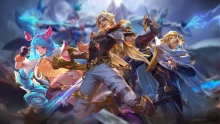
In 2017, Mobile Legends was on the brink of disaster. Facing a lawsuit from Riot Games for copyright infringement, the game was labeled a ripoff, abandoned by players, and seemingly doomed. But fast forward to 2025, and Mobile Legends isn't just surviving—it's dominating the mobile gaming industry.
From anime collaborations to esports dominance, Mobile Legends has evolved into a global powerhouse. Here’s how it went from a controversial lawsuit to becoming the king of mobile gaming.
Chapter 1: The Origins
Launched in 2016 by Moonton, Mobile Legends was designed to bring MOBA-style competitive gaming to mobile devices. At the time, mobile gaming was dominated by casual titles like Candy Crush, but Southeast Asia craved a more competitive experience.
Moonton took inspiration from League of Legends and Dota 2, simplifying complex mechanics while maintaining strategic depth. Despite early UI flaws and limited content, the game quickly gained traction due to its accessible yet rewarding gameplay.
Chapter 2: The Lawsuit & Backlash
By 2017, Mobile Legends’ popularity exploded, but it came at a cost. Many players and critics pointed out similarities to League of Legends, from map layouts to hero designs. This led Riot Games to file a $2.9 million lawsuit against Moonton for copyright infringement.
The lawsuit was devastating—Mobile Legends faced severe backlash, being dismissed as a cheap copy, and losing player trust. For a time, the game seemed destined to fade into obscurity.
Chapter 3: The Comeback
Instead of folding, Moonton made a bold move: investing in esports. In 2018, they launched the Mobile Legends Professional League (MPL), aiming to build a competitive scene and redefine their game as a legitimate esport.
Despite initial skepticism, Moonton kept pushing forward. The turning point came in 2019 with the M1 World Championship, an international esports event that brought together elite teams and millions of viewers. Mobile Legends was no longer just a game—it was a global esports phenomenon.
Chapter 4: The Power of Influencers
While Moonton was building an esports ecosystem, influencers and content creators played a crucial role in shaping the game’s future. Among them, Jess No Limit became an icon—his gameplay videos, strategy guides, and entertaining content helped humanize the game for millions.
Soon, a wave of creators, streamers, and analysts followed, diversifying content for both casual and competitive players. These influencers fueled Mobile Legends’ growth, making it more engaging and accessible worldwide.
Chapter 5: A New Era of Innovation
With esports booming and content creators driving engagement, Moonton continued evolving. They redesigned heroes, improved graphics, and introduced cinematic storytelling to enrich the game’s lore.
But the real game-changer came through collaborations. From Jujutsu Kaisen and Naruto to Sanrio and King of Fighters, Mobile Legends stopped copying trends and started setting them. These partnerships cemented its status as a cultural phenomenon.
Chapter 6: From Ripoff to King
By 2025, Mobile Legends wasn’t just competing—it was leading. The once-dismissed game transformed into a global powerhouse, boasting millions of active players, a thriving esports scene, and major partnerships across gaming and entertainment.
What makes Mobile Legends special isn’t perfection, but determination, adaptability, and resilience. It turned controversy into an opportunity, proving that a game doesn’t need to be flawless to be great—it just needs the will to keep evolving.
Recent Posts
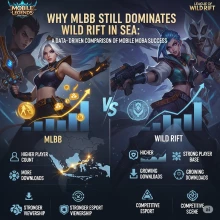
Why MLBB Still Dominates Wild Rift in SEA: A Data-Driven Comparison of Mobile MOBA Success
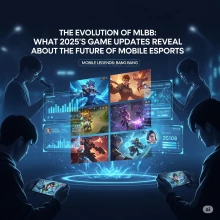
The Evolution of MLBB: What 2025’s Game Updates Reveal About the Future of Mobile Esports

From Casual to Creator: How to Turn Your MLBB Passion into Profit with Content, Community & Strategy
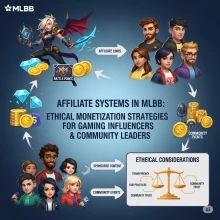
Affiliate Systems in MLBB: Ethical Monetization Strategies for Gaming Influencers & Community Leaders
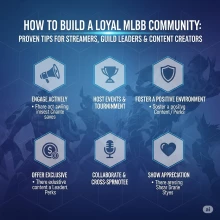
How to Build a Loyal MLBB Community: Proven Tips for Streamers, Guild Leaders & Content Creators
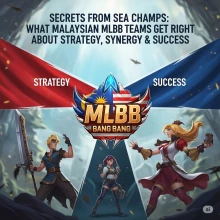
Secrets from SEA Champs: What Malaysian MLBB Teams Get Right About Strategy, Synergy & Success
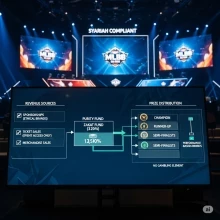
MLBB Tournament Blueprint: Structuring Syariah-Compliant Prize Pools for Ethical Competitive Play

Mobile Legends Inside the Mind of a Mythic Player: Ranked Climb Psychology, Strategy & Meta Mastery in 2025
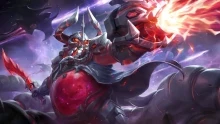
Reviving Forgotten Heroes: How to Make Bane Viable Again in the 2025 Meta
